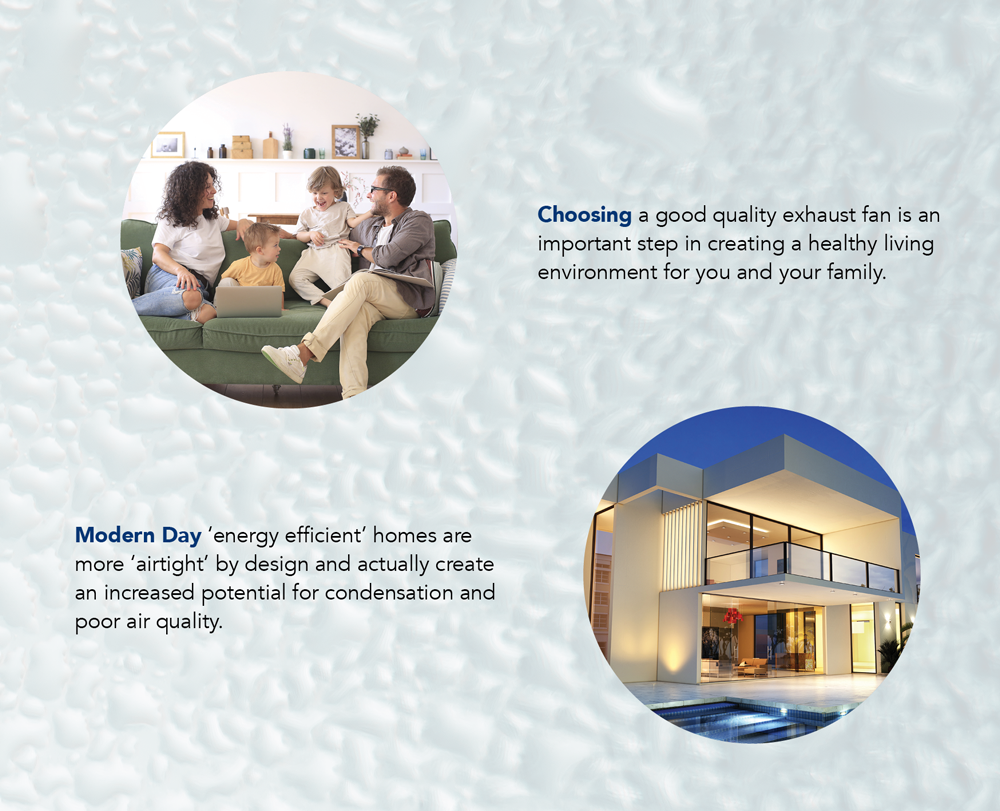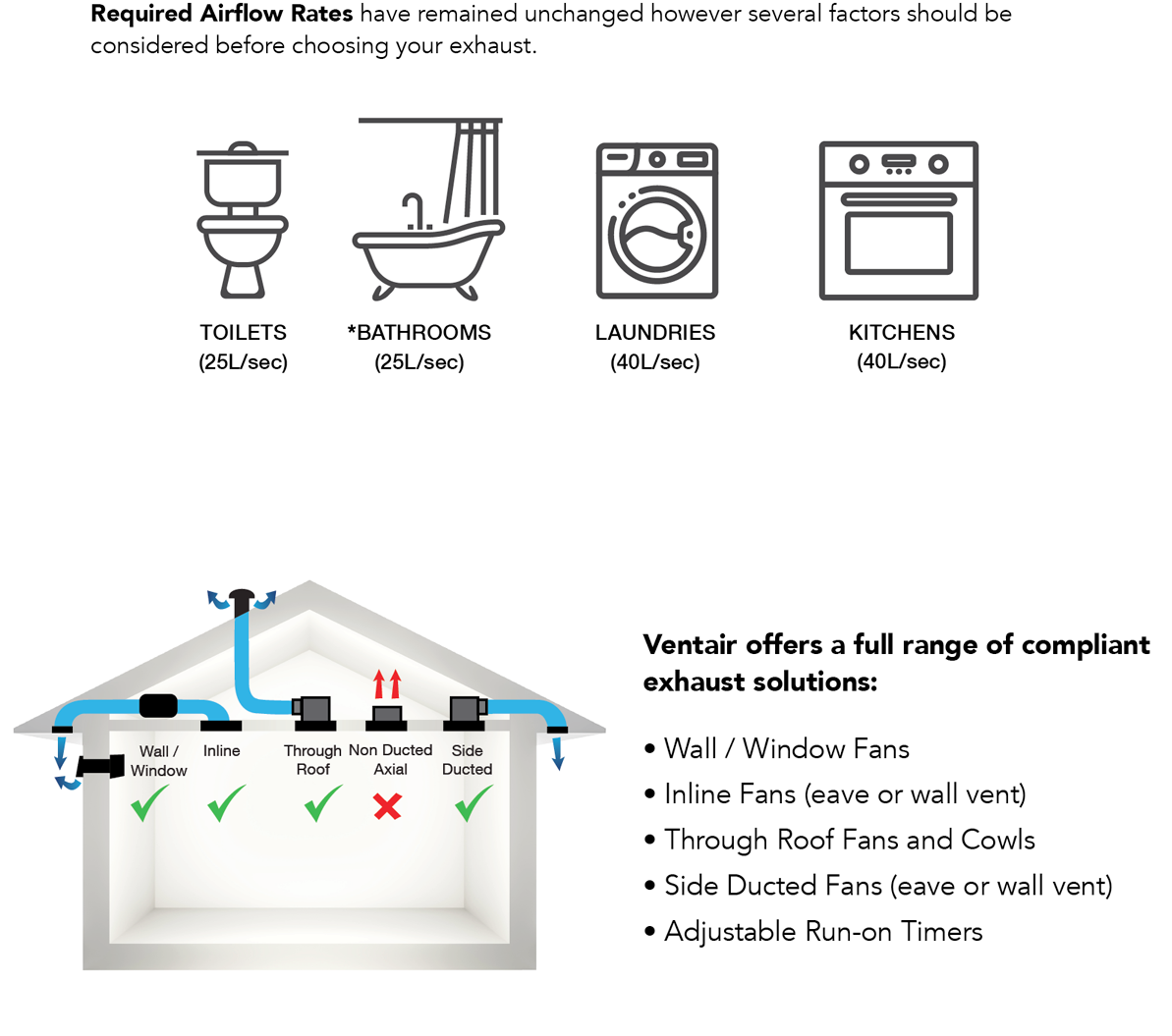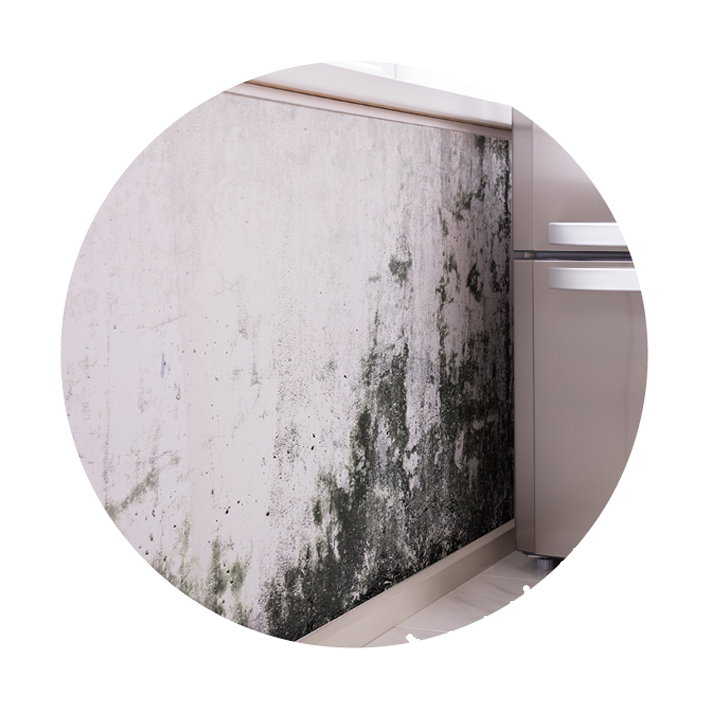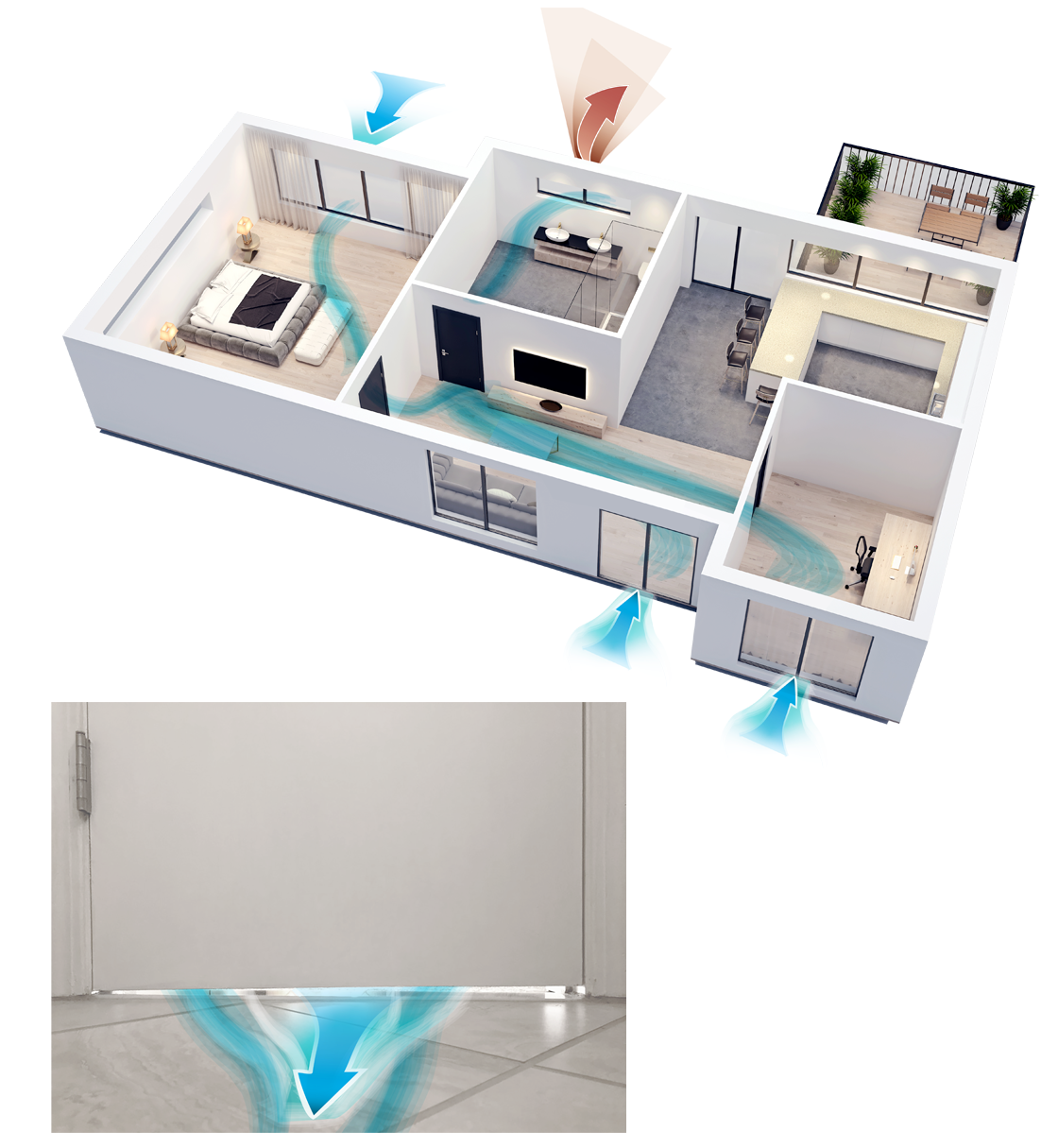Menu
NCC Condensation Management Changes - Adoption Dates & Key Information
1 May 2023 marks the adoption of NCC 2022. Transition arrangements apply for some requirements.
This page has been developed as a guide and brief introduction to the concept of condensation, causes and effects, and potential management options, including the requirements of the National Construction Code (NCC). Condensation is the result of complex interactions between the environment, building and occupants. The NCC has minimum requirements to manage the risks associated with condensation to minimise its impact on the health of the occupants.
NCC Opinion
As Australian homes evolve to embrace energy efficiency, a commendable shift is occurring towards designs that prioritise sustainability and reduced environmental impact. However, with this positive change comes a pressing concern: the potential for compromised indoor air quality and increased condensation. At Ventair, we recognise this pivotal moment in home construction and advocate for a proactive approach to ventilation to ensure homes remain fresh, dry, and free from mould.
Contact Us to learn more about NCC changes
The National Construction Code 2022 has responded aptly to this challenge with its condensation management update (10.8.2), setting forth minimum requirements for the flow rates of exhaust systems in key areas prone to moisture accumulation: bathrooms, sanitary compartments, kitchens, and laundries. These standards, specifying airflow rates of 25L/sec for bathrooms and sanitary compartments, and 40L/sec for kitchens and laundries, are a crucial step towards mitigating the risks associated with excess moisture.
Moreover, the code mandates that exhausted air from these spaces must be directed outdoors, either directly or via a duct or shaft. This directive underscores the importance of preventing moist air from infiltrating the home, including the roof cavity, where it can contribute to detrimental condensation build-up.
Contact Us to learn more about NCC changes
Ventair wholeheartedly endorses these provisions as they align with our commitment to providing innovative ventilation solutions that promote healthier indoor environments. By ensuring that moisture-laden air is efficiently extracted and expelled from the home, we can significantly reduce the likelihood of condensation-related issues such as mould growth and structural damage.


In response to the evolving needs of energy-efficient homes, Ventair offers a range of cutting-edge ventilation products tailored to meet the requirements of the National Construction Code 2022. From high-performance exhaust fans with adjustable airflow rates to ducting systems designed for optimal air distribution. Additionally, Ventair is proud to introduce our last innovation in mould reduction technology. Our new ventilation system features a 24/7 continuous ventilation setting, which allows for compliance with the new regulation changes while actively combating mould formation. By providing continuous airflow and effectively managing moisture levels, our technology ensures a healthier indoor environment for homeowners.
As advocates for sustainability and well-being, we believe that embracing these changes in ventilation standards is not only necessary but also beneficial for homeowners and the environment alike. By investing in effective ventilation strategies, we can ensure that the pursuit of energy efficiency does not come at the expense of indoor comfort and health.
Contact Us to learn more about NCC changes
| State/Territory | Condensation management |
|---|---|
| Australian Capital Territory | ACT NCC 2022 implementation |
| New South Wales | 1 October 2023 |
| Northern Territory | 1 October 2023 |
| Queensland | Queensland Modern Homes website |
| South Australia | 1 October 2024 |
| Tasmania | 1 October 2023 |
| Victoria | 1 May 2024 |
| Western Australia | 1 May 2025 |
